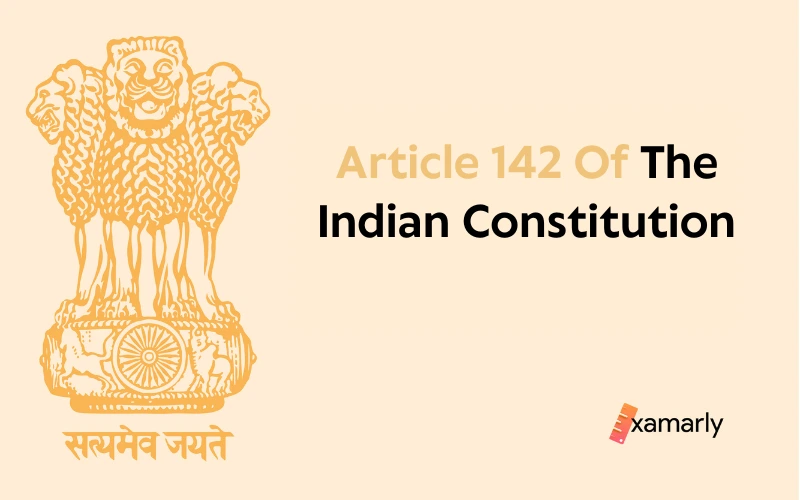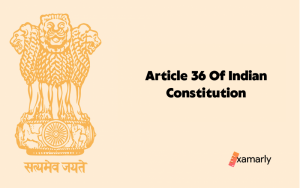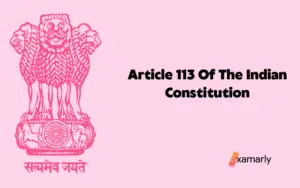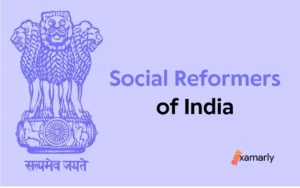According to Article 142 of the Indian Constitution, the Supreme Court has the exclusive authority to render “full justice” between the parties when the law or a statute may not otherwise permit it. The said Article is outlined in Part V of the Constitution.
When such happens, the Court may step in to resolve the conflict in a way that is appropriate given the circumstances.
For the UPSC-CSE Preliminaries and GS II Mains, candidates for the UPSC must be familiar with Article 142.
History Of Article 142 Of The Indian Constitution
Originally presented to the Constituent Assembly on 27th May in the year 1949 as Draft Article 118 for the discussion, Article 142 was later renumbered. However, it was enacted without argument on the exact same day, perhaps because everyone understood that the nation’s top court should be given plenary power to administer perfect justice in order to ensure judicial independence.
Constitutional Provisions
Article 142 addresses the execution of Supreme Court decrees, orders, and orders regarding discovery, among other things.
- In the course of exercising its authority, the Supreme Court may issue any decree or order that is required to provide full justice in any case or subject that is before it. Any such decree or order shall be enforceable throughout the entire territory of India in accordance with any provisions set down in or pursuant to any statute passed by Parliament, or, in the absence of such provisions, in accordance with such other provisions as the President may by order specify.
- The Supreme Court shall, with respect to the entire Indian territory, have full and complete power to issue any order necessary to secure the presence of any person, the discovery or production of any texts, or the inquiry or punishment of any scorn of itself, subject only to the terms of any law adopted in this behalf by Parliament.
Why Did The Constituent Assembly Consider Article 142 Necessary?
- The importance of incorporating such a provision in the Constitution was emphasized by the Constituent Assembly.
- The framers of the Constitution thought that this clause was crucial for people who are compelled to endure suffering because the judicial system is ineligible to provide the necessary remedies.
Usages Of Article 142
The executive and legislative branches may be replaced under Article 142. The Supreme Court uses broad authority granted by Article 142 to carry out administrative and legislative duties in the interest of full justice.
In this endeavor, Article 142 is supplemented by Articles 32 (Right to constitutional remedies), 141 (The Supreme Court’s ruling shall be binding on all courts within India), and Article 136. (Special Leave petition). The term used to characterize this is judicial activism. In order to give “complete justice,” it has frequently overridden laws enacted by Parliament, as in the following cases:
- Union Carbide Case: In 1989, the Bhopal Gas Tragedy victims received compensation after the Supreme Court granted relief under Article 142.
- Case Concerning Coal Block Allocation: In 2014, the Supreme Court used this provision of the constitution to annul the allocation of coal blocks to culprits from 1993 onward and impose fines on coal that was produced illegally.
- Ban on Liquor sale on Highway case: The sale of liquor (or alcoholic beverages) within 500 meters of the outer edge of a highway was deemed illegal in 2016 by the Supreme Court pursuant to Article 142. It was decided to take this action to prevent accidents brought on by intoxicated driving.
- Babri Masjid demolition case: The Supreme Court demanded that the Center prepare a plan for the establishment of a trust in order to build the Ram Mandir at the Ayodhya Masjid demolishing site.
Plus Points Of Article 142
The Supreme Court (SC) utilizes Article 142 of the Indian Constitution to provide remedies and address what it sees as holes in the nation’s legislative framework.
It is only designed to be utilized in situations where the nation’s current legal and policy frameworks are ineffective or cannot adequately address the issue at hand. Some of its advantages are as follows:
- The court has exercised its powers under Article 142 to protect citizens’ rights and maintain constitutional principles whenever the government or legislature has failed to do so.
- Article 142 grants the Supreme Court the authority to fill in statutory loopholes in its role as the constitutional defender.
- Additionally, it creates a system of checks and balances for the different branches of the government. As an example
- In the case of Vishakha v. State of Rajasthan, the Supreme Court created guidelines to protect a woman against sexual harassment in the workplace.
- With its decision in the Bandhua Mukti Morcha Case, the Supreme Court of India significantly impacted the bonded labor system in the country.
- The right to subsistence was deemed to be an essential component of the right to life in the case of Olga Tellis.
Minus Points Of Article 142
- Unaccountable: One of the problems with the Supreme Court’s powers under Article 142 is that, unlike the executive and legislative branches, it cannot be held responsible for its decisions.
- For instance, in one decision, Delhi’s highest court banned e-rickshaws in some neighborhoods without offering any substitutes.
- However, it cannot be held accountable for violating the fundamental right to practice any occupation or run a business.
- Judicial Under-reach: The problem of judicial underreach arises when courts, despite having jurisdiction, fail to fulfill their duties, so causing injustice.
- Although the justices of the Supreme Court are not obligated to give reasons for their decisions, the majority of petitions and appeals that are submitted to it in accordance with Article 136 of the Indian Constitution are denied.
- Frequent court intrusion can diminish the public’s trust in the government’s reliability, competence, and effectiveness.
- Ambiguity: Despite the Supreme Court’s efforts to clarify, the meaning of the phrase “full justice” remains hazy. There is a lot of ambiguity around the Apex Court’s decisions, and it is unclear how to use Article 142.
- Impact on the economy negatively: The decision to prohibit the sale of alcoholic beverages along national and state highways had a detrimental effect on the economy because it shut down a large number of hotels, bars, and restaurants in addition to liquor shops, which put tens of thousands of people out of work.
- Fundamental rights disregarded: The supreme court severely penalized the coal block owner/allottees in the coal block case without giving the allottees a chance to be heard. It demonstrates how the Supreme Court disregarded an individual’s fundamental rights while dispensing “full justice.”
Recent Case
The Supreme Court has approved the release of A.G. Perarivalan in the assassination case involving former Prime Minister Rajiv Gandhi by using its extraordinary authority to uphold comprehensive justice in accordance with Article 142 of the Constitution.
- To preserve the principle of federalism, the court ruled that individual states possessed the authority to assist and advise the Governor in the event that convicted murderers appealed for pardon under Article 161.
- According to Article 161, the Governor of a State has the authority to pardon, reprieve, respite, or remit punishment, as well as to suspend, remit, or commute the sentence of any individual found guilty of breaking any law pertaining to an issue within the scope of the State’s executive power.
- The court rejected the Centre’s claim that only the President, and not the Governor, had the authority to pardon a person under Section 302 (murder) of the Indian Penal Code. The court reasoned that this claim would make Article 161 “dead-letter” and result in an exceptional situation where pardons given by Governors in murder cases during the previous 70 years would be invalidated.
Conclusion
In situations where the law or a statute may not always offer a remedy, the Supreme Court is given the exclusive authority under Article 142 to “complete justice” between the parties.
In some circumstances, the Court may take additional steps to resolve a disagreement in a way that is appropriate given the particulars of the case.
The statute does not contain any guidelines or rules that specify where, when, or under what conditions the Apex Court may apply the aforementioned article to “complete justice.”
For Further Readings:
| Article 14 Of The Indian Constitution (Equality Before Law) | Article 122 Of The Indian Constitution |
| Article 184 Of The Indian Constitution | Article 134 Of The Indian Constitution (Appellate jurisdictions of SC In Regard To Criminal Matters) |
| Article 137 Of The Indian Constitution | Article 123 Of The Indian Constitution |
UPSC PYQ
With reference to the Constitution of India, prohibitions or limitations or provisions contained in ordinary laws cannot act as prohibitions or limitations on constitutional powers under Article 142. It could mean which one of the following? (2019)
- The decisions taken by the Election Commission of India while discharging its duties cannot be challenged in any court of law.
- The Supreme Court of India is not constrained in the exercise of its powers by the laws made by Parliament.
- In the event of grave financial crisis in the country, the President of India can declare Financial Emergency without counsel from the Cabinet.
- State Legislatures cannot make laws on certain matters without the concurrence of the Union Legislature.
Explanation:
- In line with clause 1 of Article 142, the Supreme Court may, in the course of its duties, issue any judgment or order necessary to ensure that every party is treated fairly in any matter or case that comes before it. Any such decree or order will be enforceable across the whole of India in compliance with any provisions set out in or based on a law passed by Parliament, or, if there are no such provisions, in accordance with any other provisions that the President may order.
- In order to ensure that justice is served, Article 142 adds to the authority already granted to the Supreme Court by the Constitution. In doing so, the Court is not constrained by a lack of jurisdiction or authority of law.
Hence the correct option is 2.
FAQs On Article 142
What Article 142 Deals With?
Article 142 of the Indian Constitution deals with the implementation of Supreme Court decrees and orders, including orders for discovery, etc.
What Is The Objective Of Article 142?
The purpose of article 142 is to give the Supreme Court the ability to fill in any gaps that may arise in providing “full justice” to the parties. A statutory provision cannot be repealed by using Article 142 of the Constitution.
What Is The Purpose Of Article 142(1)?
The purpose of Article 142(1) is to ensure that the Supreme Court does not rely on the government to carry out its orders and decrees.
In the alternative, such reliance would be in breach of the principles of independence of the court and separation of powers, both of which are components of the basic framework of the Constitution.
What Is The Significance Of Article 142?
Prevents Unfairness: It offers a particular and extraordinary power to the Supreme Court, which enables it to deliver complete justice to plaintiffs who have suffered through illegality or injustice throughout the processes. This, in turn, prevents injustice from occurring.
Uphold the rights of citizens: Article 142 has been used for the aim of defending the rights of various segments of the populace.
Check on Government: Functions as a mechanism of checks and balances with the Government or Legislature.
What Is Meant By Judicial Overreach?
Judicial overreach occurs when the judiciary begins to interfere with the proper operation of the legislative or executive branches of the government, crossing over from its own function and into the executive and legislative branches. In a democracy, judicial overreach is regarded as undesirable.
Write The Constructive Application Of Article 142.
The Supreme Court received praise early on in the development of Article 142 from both the general public and the legal community for its efforts to provide full justice to various underprivileged groups in society or to save the environment. Some of the examples of invocation of Article 142 are:
1. Only by invoking this article Supreme Court has used its vast powers for the cleansing of the Taj Mahal (one of the seven wonders of the world).
2. Also, article 142 has wide applications in preventing drunken driving by putting a ban on the sale of alcohol within the sphere of 500m of the outer rim of the national highways.






